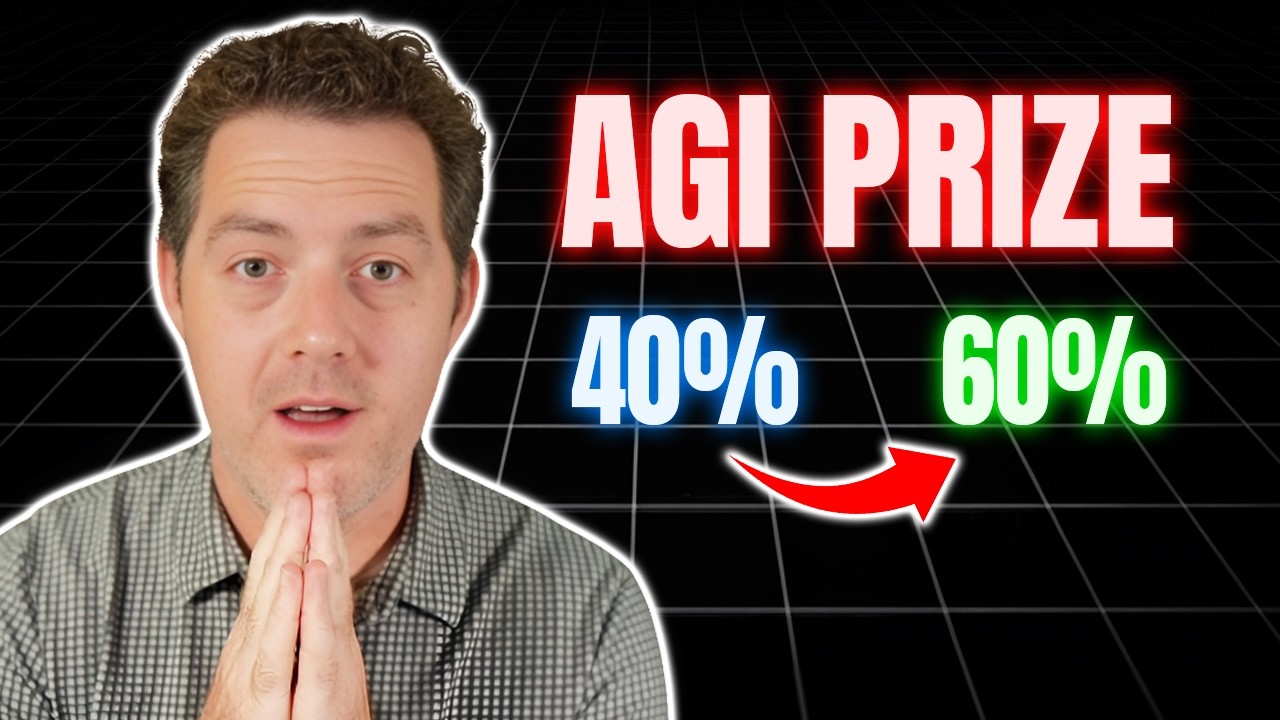The video highlights a breakthrough in language model learning through a method called “test time training,” which significantly improved performance on AGI benchmarks, achieving a score of 61.9% on the ARC Prize, surpassing the average human score. This technique allows models to adapt dynamically to new problems during inference, enhancing their problem-solving capabilities and pushing the boundaries of what smaller models can achieve in the pursuit of artificial general intelligence.
The video discusses a significant breakthrough in language model learning techniques, specifically focusing on a new method called “test time training.” This approach has led to a remarkable improvement in performance on the AGI benchmarks, particularly the ARC Prize, which aims to evaluate artificial general intelligence through complex reasoning tasks. The presenter highlights how recent advancements, such as the 01 family of models, have allowed AI to utilize Chain of Thought reasoning, enhancing their problem-solving capabilities during inference time. The introduction of test time training represents another layer of scaling that could potentially bring us closer to achieving AGI.
The ARC Prize is a public competition designed to challenge AI models in generalization tasks, where they must apply learned knowledge to novel problems. The current top score on the leaderboard was only 42%, while the new test time training technique achieved an impressive 61.9%, surpassing the average human score of 60%. This demonstrates the potential of the new method to enhance AI’s ability to generalize and solve problems that differ significantly from their training data, which has been a longstanding challenge for language models.
Test time training involves temporarily updating model parameters during inference, allowing the model to adapt to new problems it encounters. This technique builds on previous methods like LoRA (Low-Rank Adaptation), which fine-tunes models efficiently by adjusting a small number of parameters while keeping the original model weights frozen. The video explains that the success of test time training relies on three key components: initial fine-tuning on similar tasks, generating auxiliary task formats and augmentations, and per-instance training, which collectively lead to substantial improvements in accuracy.
The presenter elaborates on how test time training works by generating training data from the test input, allowing the model to fine-tune itself dynamically for each problem it faces. This process involves creating variations of the original problem and optimizing the model’s parameters to minimize prediction errors. After generating predictions, the model resets to its original parameters for the next task, enabling it to adapt continuously without retaining specific adjustments from previous tasks. This dynamic approach enhances the model’s ability to tackle complex and novel reasoning problems.
In conclusion, the video emphasizes that the advancements in test time training and other augmentation methods are pushing the boundaries of what smaller models can achieve, particularly in the context of AGI. As the field of AI continues to evolve, the focus may shift from merely scaling training data to maximizing the potential of existing data through innovative techniques. The presenter believes that these developments could be crucial in the pursuit of artificial general intelligence, marking a significant step forward in the capabilities of language models.
